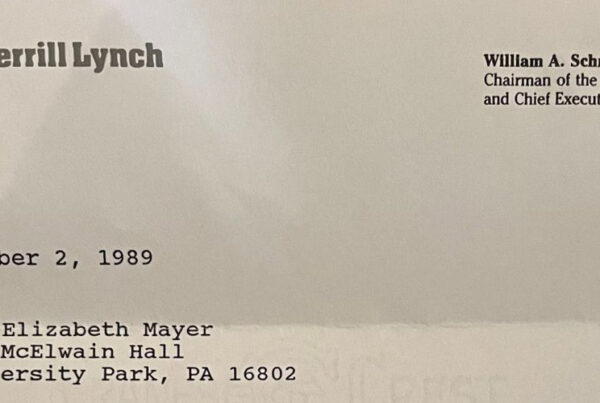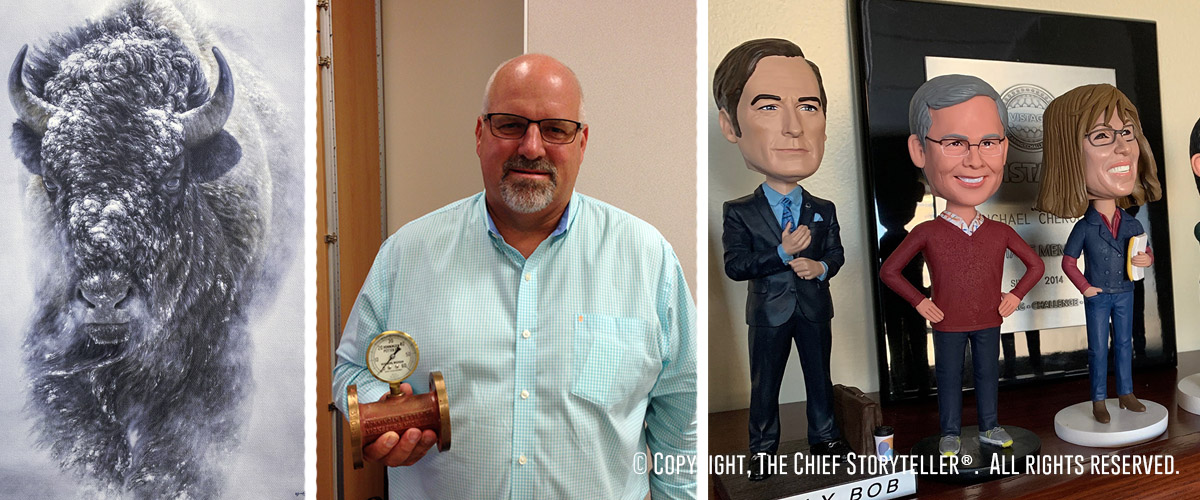
Have you ever held an object that instantly transported you back to a cherished memory or a profound experience? It could be a pen gifted by a mentor, a painting that captured a turning point in your life, a souvenir from a transformative journey, or even a simple birthday card from a loved one. These seemingly ordinary items hold extraordinary power – they are symbols that encapsulate the essence of our most meaningful experiences. Lists of personal and workplace symbols along with visual examples are at the bottom.
Symbols are more than just physical objects. Symbols are powerful emotional anchors that connect us to our stories.
When you incorporate these powerful symbols into your narratives, you create what we call, “Symbol Stories.” These stories transcend the realm of ordinary storytelling by forging a deep, instantaneous connection between the symbol and the experience it represents.
The true strength of a Symbol Story lies in its ability to evoke an immediate and profound response from the audience. The moment you introduce the symbol, your audience is drawn into the heart of your experience.
They visualize. They feel. They relate. To your story on a much, much deeper level. Why? Because the symbol acts as a tangible bridge between the narrative and their own emotions.
To craft an effective Symbol Story, the symbol must be a concrete representation of a noun – a person, place, or thing. This physical embodiment is crucial because it allows your audience to form a strong mental and emotional connection with your message. When you share your story alongside the symbol itself or an image of it, the narrative comes alive, engaging your audience and creating a lasting impact.
Symbol Stories are truly transformative. They simplify complex ideas. They evoke powerful emotions. They create an enduring connection with your audience. Whether you’re sharing a personal anecdote or conveying a business concept, incorporating a symbol can elevate your story from ordinary to extraordinary.
The next time you want to create a truly engaging and impactful story, consider the symbols that have shaped your own experiences. Choose an object that embodies the essence of your message, and weave it into your narrative.
By harnessing the power of Symbol Stories, you will captivate your audience.
You will leave a lasting impression.
You will create a shared emotional experience that transcends words alone.
Remember, the symbols we hold dear are more than just objects – they are the physical embodiment of our most profound experiences. When we share these symbols through our stories, we invite others to connect with us on a deeper level, creating a powerful bond that resonates long after the story has been told.
Consider using Symbol Stories at your All-Hands Meetings, ERGs, Board Meetings, On-boarding Welcome Meetings, Team Meetings, Sales Meetings, Outreach for donors and sponsors, Cultural Events, Holiday parties, and the list goes on.
This article is part of a series on Languaging™ (definition below). Languaging™ is the deliberate shaping of your written and spoken communications to better engage, influence, and persuade. And symbols are one of many tools that fall under Writing Enhancements. If you are a client of ours or have attended a training or speaking program, you know about the always-impactful Figures of Speech (definitions and examples).
Languaging™ is deliberately shaping my words and how I speak them to better engage, influence, and persuade. Languaging™ involves techniques like rhythmic repetition, impactful phrasing, purposeful pausing, and scalable wording. Techniques that invite audiences in, make them eager to learn more, and inspire them to act.
Examples
As you read through these two lists, think about your own personal and workplace situations. What symbols should be part of your storytelling?
Personal Symbols
- Acceptance letter to university
- Acceptance letter for your first job
- Birthday card from a grandparent
- Childhood toy
- Framed art
- Jewelry
- Picture
- Piece of clothing
- Postcard
- Recipe from a loved one
- Report card from grade school
- School mascot stuffed animal
- Sculpture
- Souvenir
- Tchotchke
Workplace Symbols
Here are some examples where you can find powerful workplace Symbols.
- Traditions & Culture
- Rub the nose of a statue or figurine for good luck, such as the bull statue on Wall Street or a university mascot
- Fist-bump or high-five coworkers after a successful project or sale
- Ring a bell or gong to celebrate a significant achievement or milestone
- Sign a wall or beam during the construction of a new building
- Group stretch or exercise before the start of a shift, particularly in physically demanding jobs
- Throw a pie in the face of a manager or executive for charity fundraisers
- Pass a trophy or plaque to the employee or team with the best performance each month or quarter
- Award the best parking spot to the employee of the month/quarter/year accompanied by a certificate/plaque
- Wear branded clothing/spirit wear for casual Friday’s
- Join in the charity walk or run to raise money for a good cause and wear the shirt at work
- Participating in “silly hat day,” Halloween, or Ugly Sweater Contest
- Receiving a birthday card every year from the CEO
- Organization-Specific
- First page of the contract with your very first customer / first dollar
- Miniature Vehicle that sits in the lobby: tractor, delivery truck, crane
- Miniature Equipment: bolt, assembled product, hammer
- Spirit Wear awarded at milestones
- Your logo
- Pictures of events employees attend
- Awards
- Specialty Branded Items: bobble heads, characters, lapel pins (see below for examples)
- Coins (especially in the military and emergency services)
Visual Examples
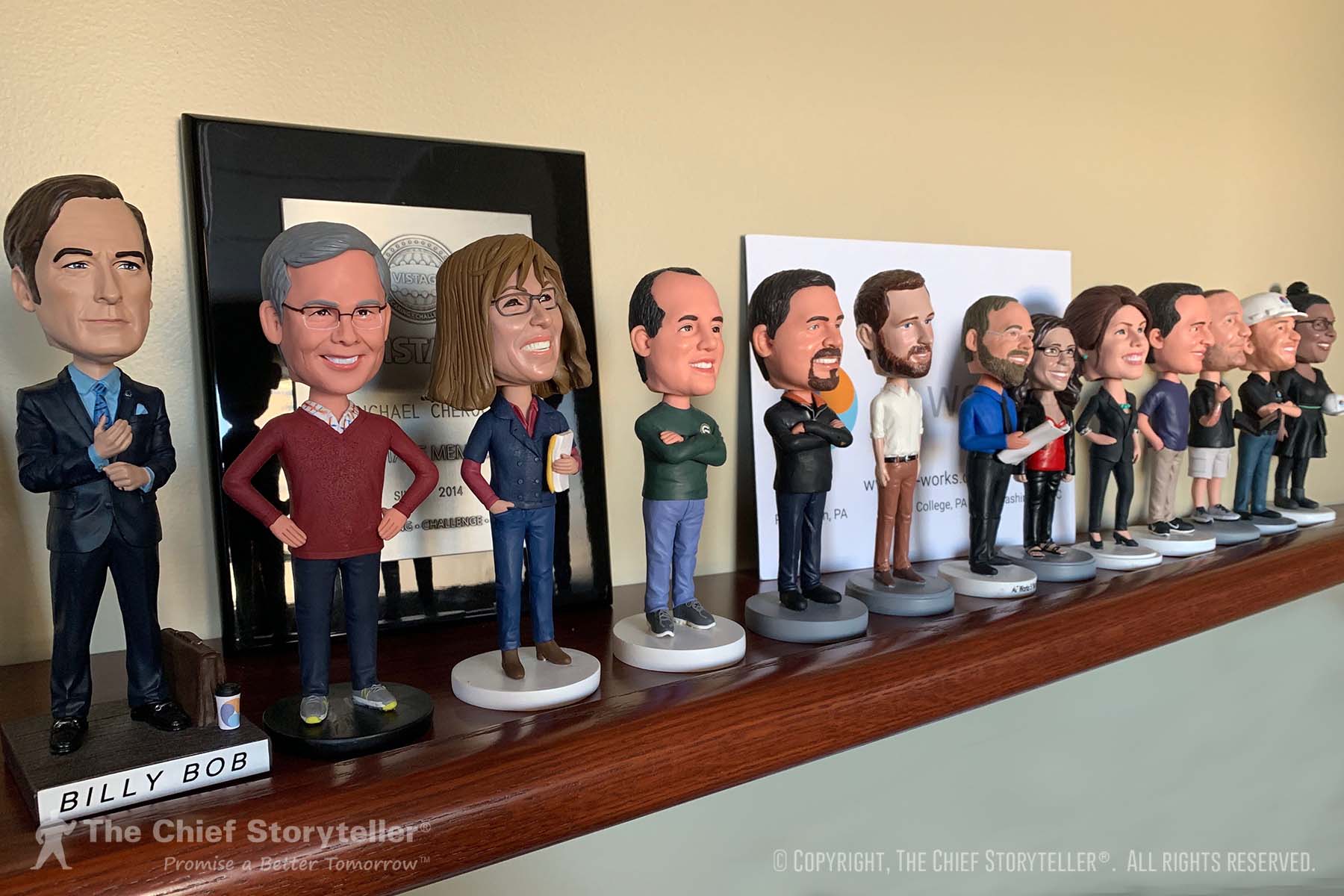
Bobble heads are awarded to each employee at their five-year anniversary. Two bobble heads are purchased. One for the lobby display, which is shown here. One for the employee to take home or show off with pride at their desk.
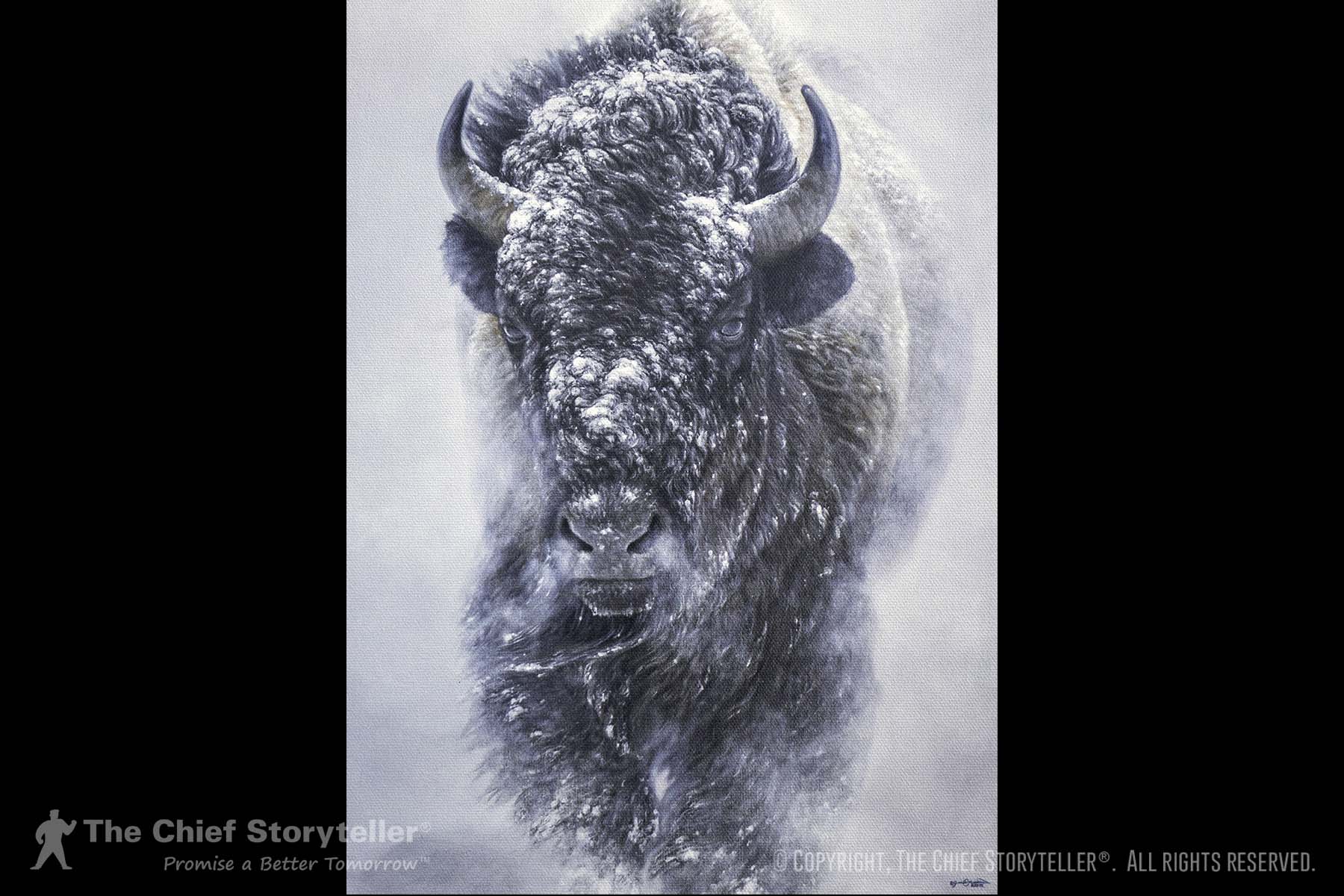
The bison is a unique animal. Its strength and intelligence have deep meaning for one of our client CEOs. As such, the bison appears in their yearbook, code of honor, presentations, and more. The bison is deeply ingrained into their culture.
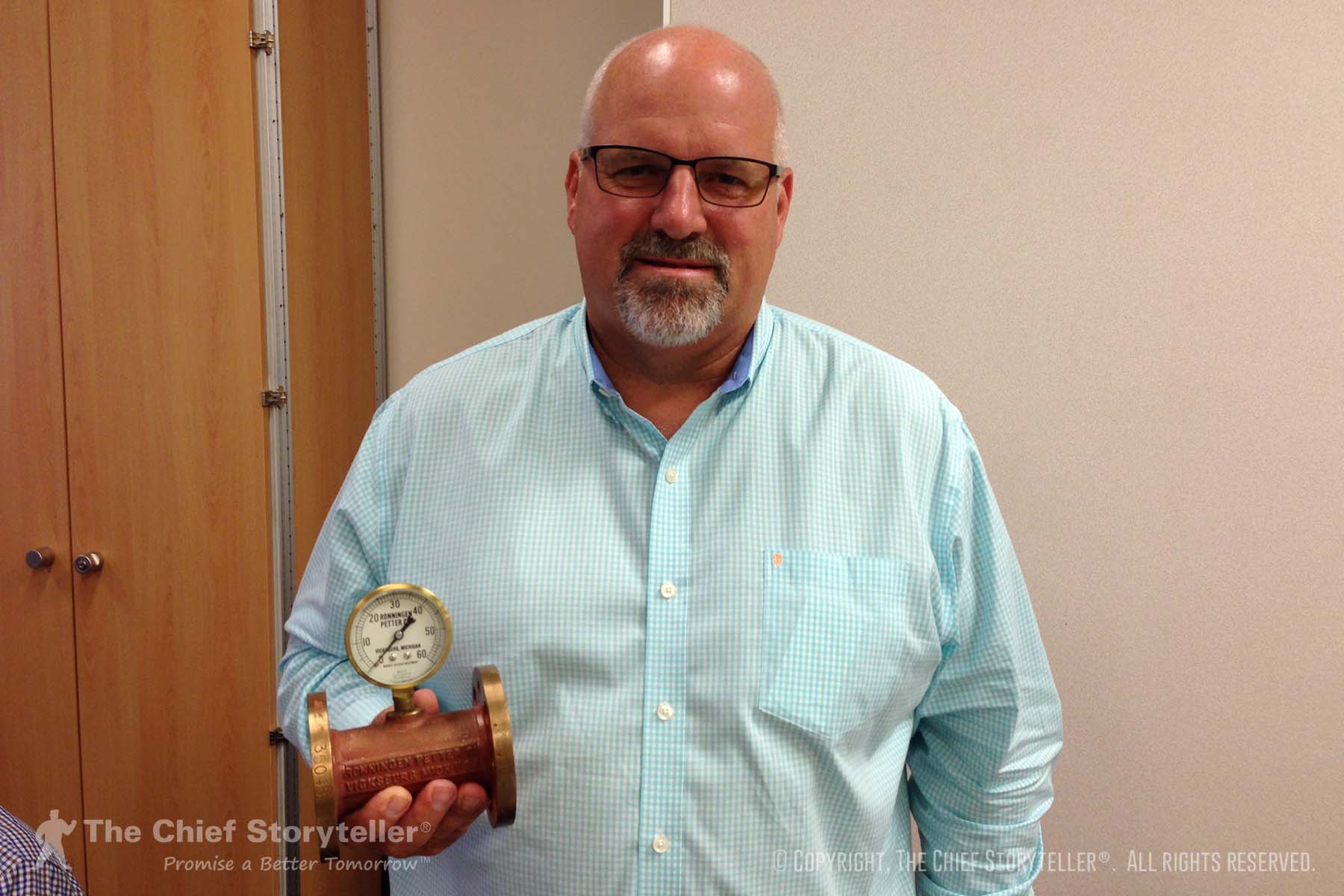
Mike, an executive at a manufacturing company was an attendee at a Vistage event where Ira Koretsky, our CEO, presented his LeadersSTORY ( Leaders to the Power of Story ) program. This valve sits on Mike’s desk today as a reminder, a lesson learned, not just for him, for everyone on his team and colleagues. He brought the valve to the program to learn how to shape his story into a powerful visual metaphor he can use in his various communications.
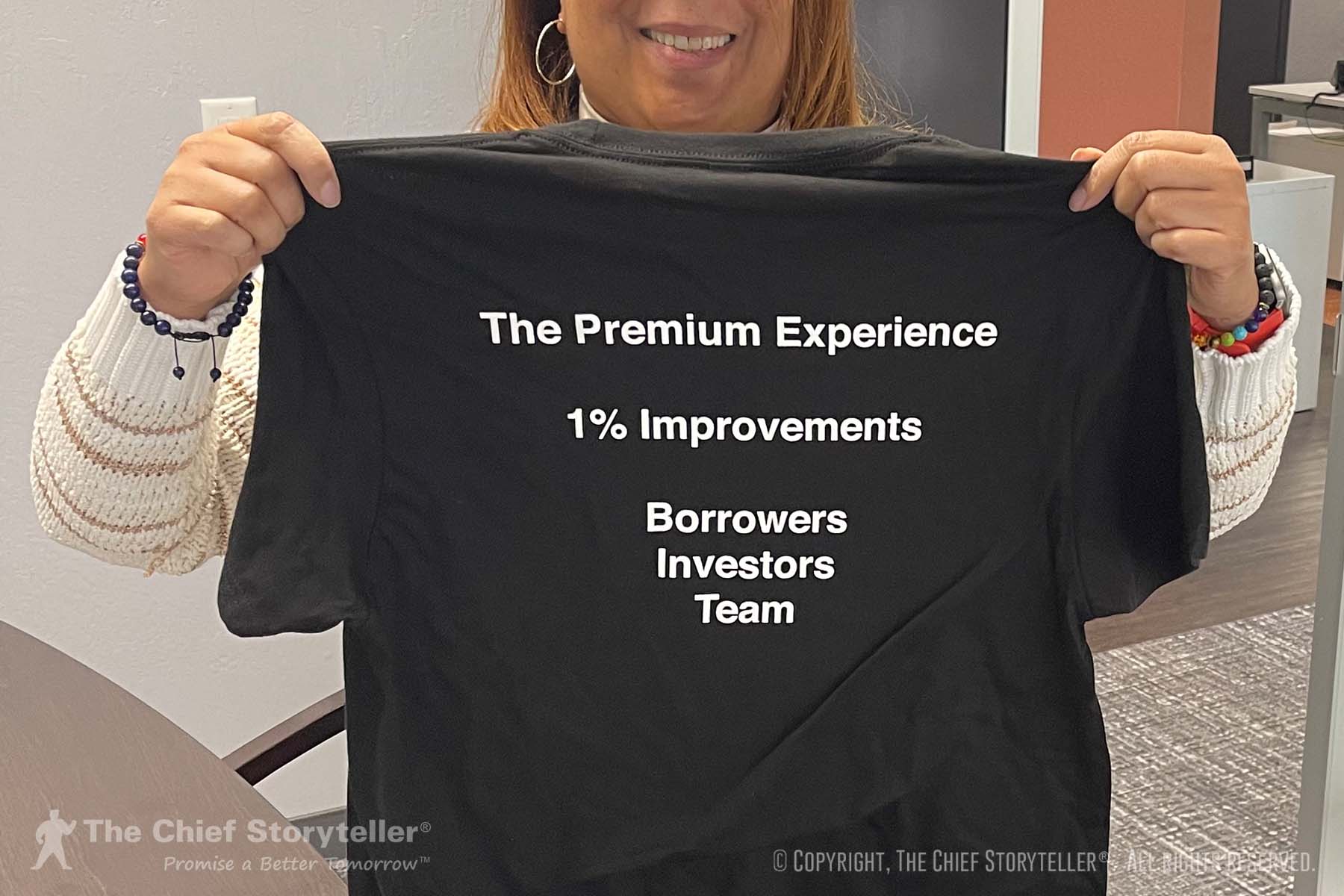
Every year, Adham, CEO of Socotra Capital, distributes t-shirts to his employees at the annual All-Hands Meeting. Every year, employees try to sneak into his office to get a peak at the design and message for the forthcoming year, both of which are synched to their culture and values.
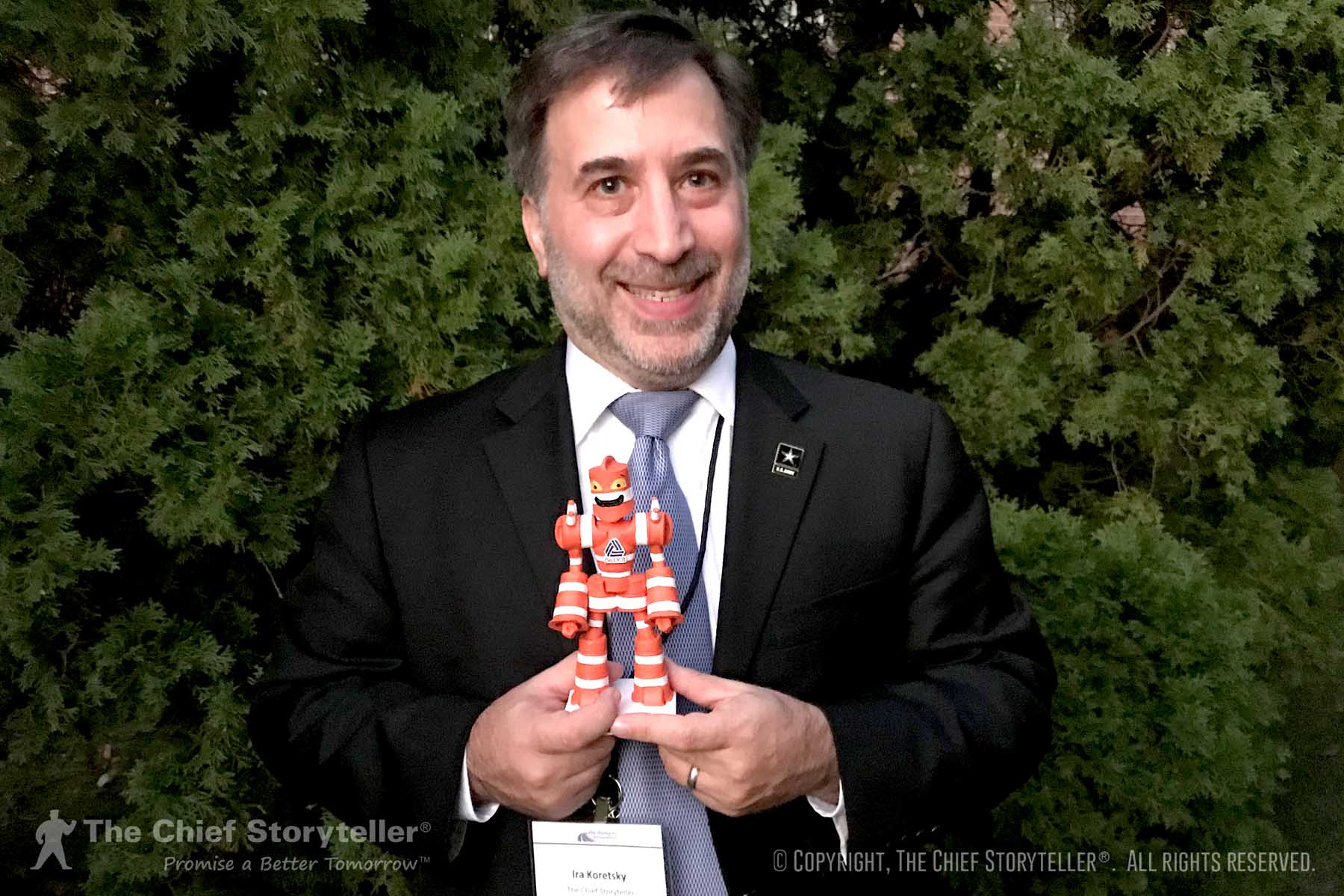
In preparing for his Storytelling for Leaders keynote for the Federal Department of Transportation (FHWA) Innovation Conference, our CEO, Ira Koretsky, interviewed the Delaware Secretary of Transportation, Jennifer Cohan. After the conference, Secretary Cohan gave Wally to Ira. Wally the Work Zone Warrior, is a 7″ figurine, that represents the heart of innovation for Delaware. Wally’s large counterpart is about 15 feet tall and travels throughout the state as part of its innovation outreach.
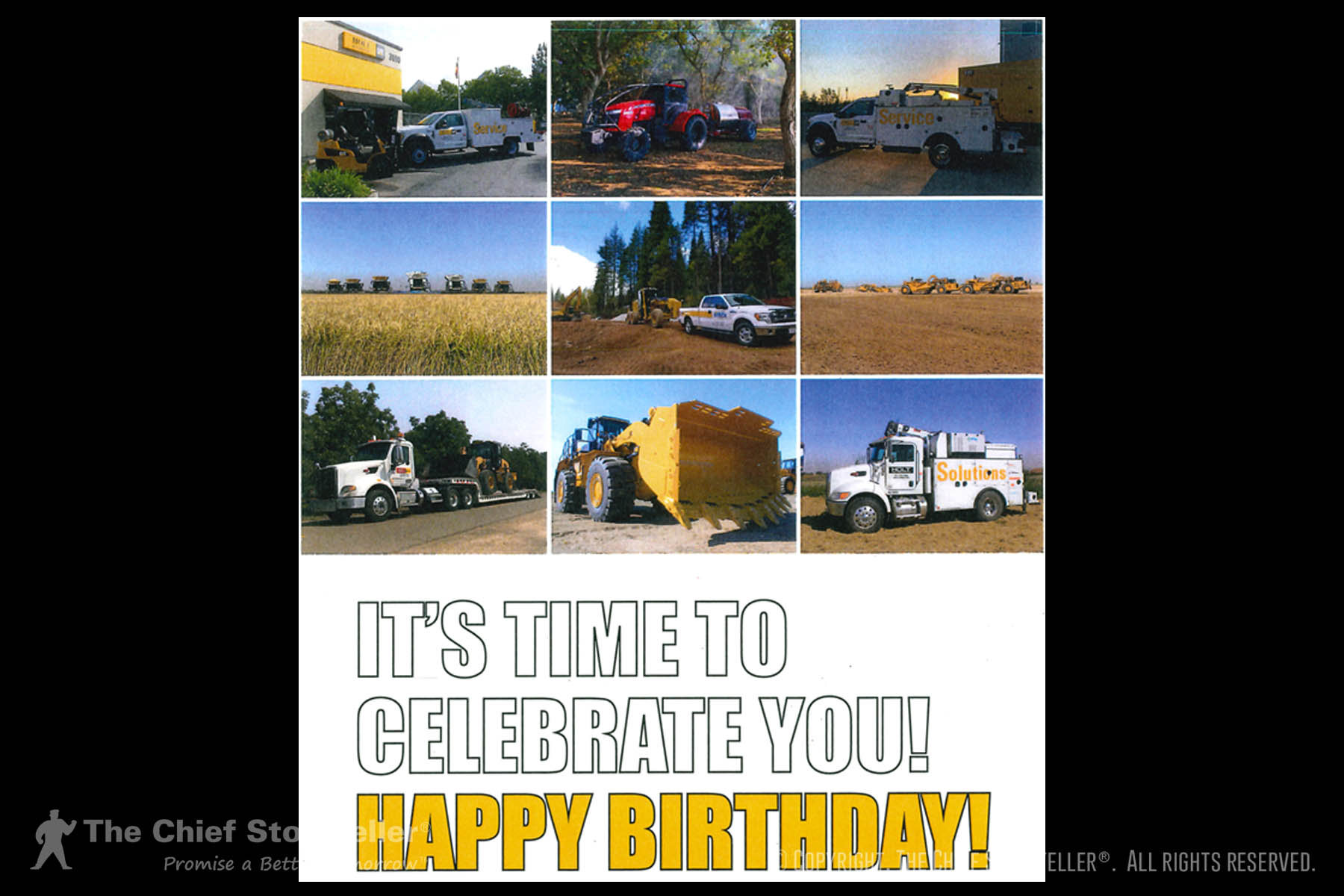
One of our customers rents and sells large vehicles, many of them are for construction. E-V-E-R-Y year, the CEO inscribes a short message and signs his name to E-V-E-R-Y one of the 800 plus people. During their Storytelling for Leaders workshop, we learned that some of the participants have kept E-V-E-R-Y card received–some being there for more than 30 years. How’s that for a symbol? and Impact!
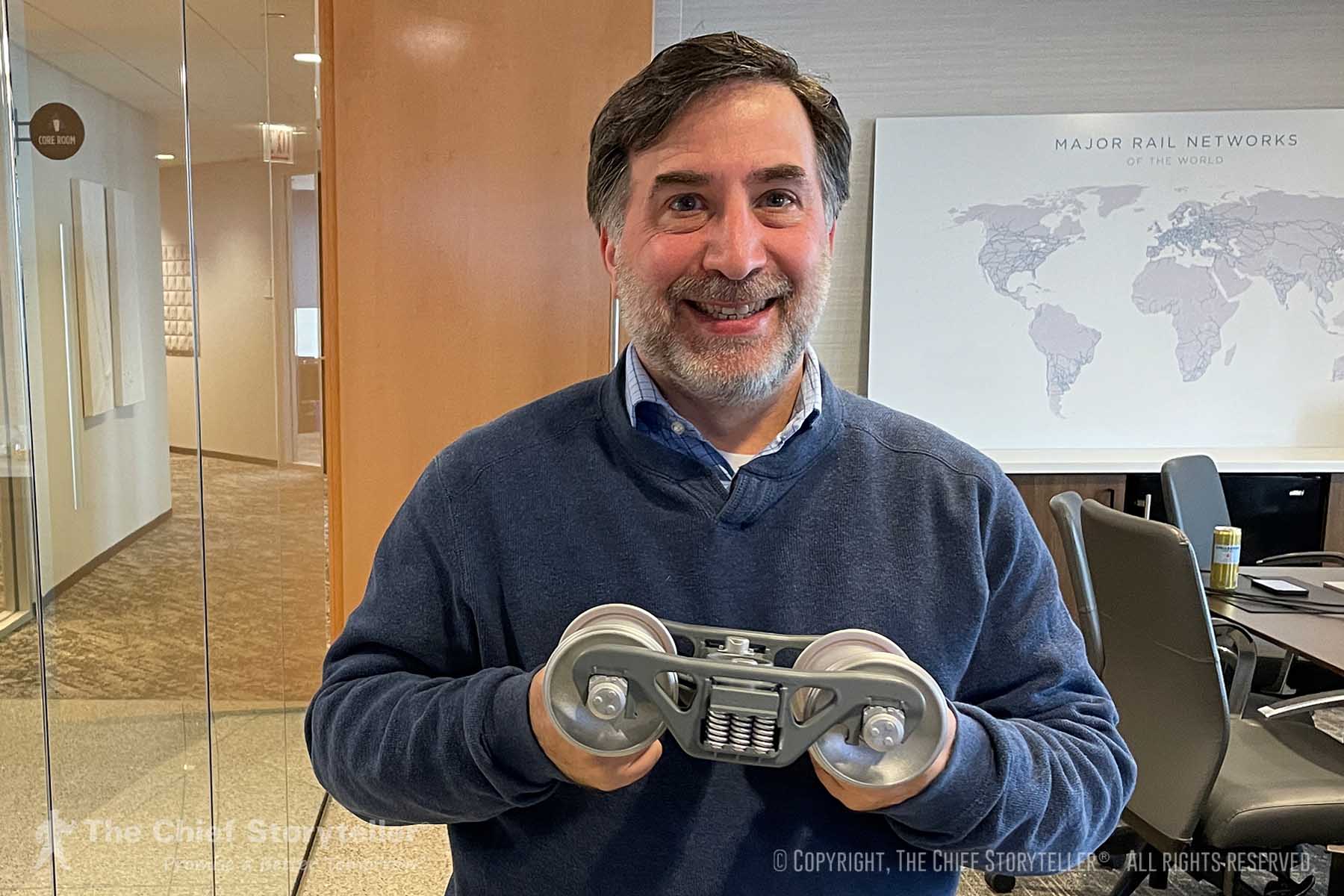
We had the pleasure of spending time in Chicago with a company that provides freight and transit systems globally. While working with members of the executive team on their conference presentations, we learned about the bogie (pictured). The bogie is their symbol, their rallying flag. The bogie represents more than a hundred years of innovation, dedication, and hard work. Irrespective of who sees the bogie, they always smile.
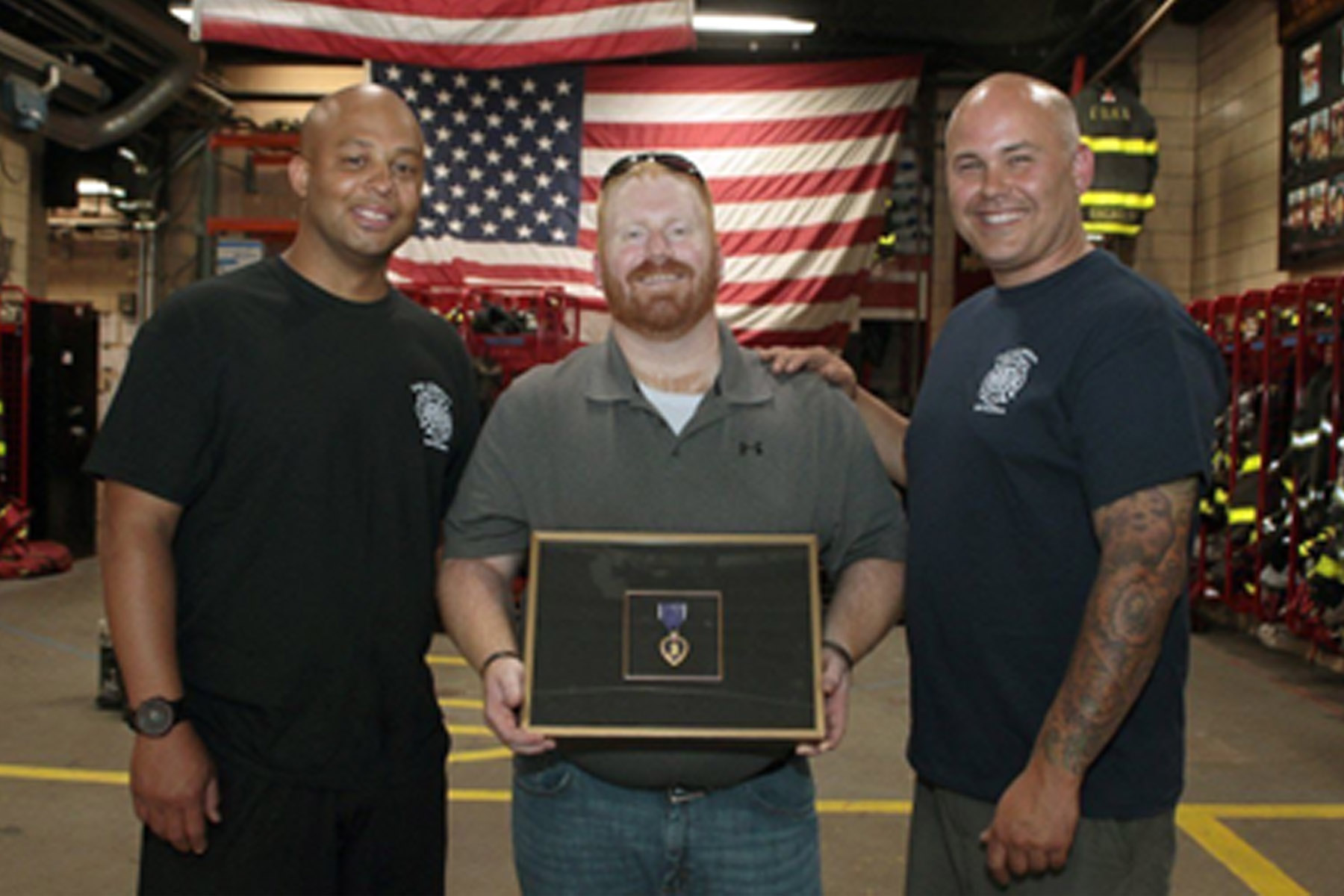
Charles Wayne O’Brien from Kansas, an Army veteran and Purple Heart recipient, donated his medal to the New York City’s firefighters in Engine 54, Ladder 4, Battalion 9. O’Brien was inspired by their acts of bravery on 9/11. Today, his framed Purple Heart, seen in the picture, sits on the wall below the plaques of the 15 fallen firefighters from this station.
Photography Sources:
Photography/visuals marked are © Copyright, The Chief Storyteller®, LLC. All Rights Reserved.
Purple Heart photograph from Engine 54, New York City, New York
#chiefstoryteller #datastorytelling #storytellingforleaders #storytellingforsales #storytelling
Content refreshed and images updated 2024



